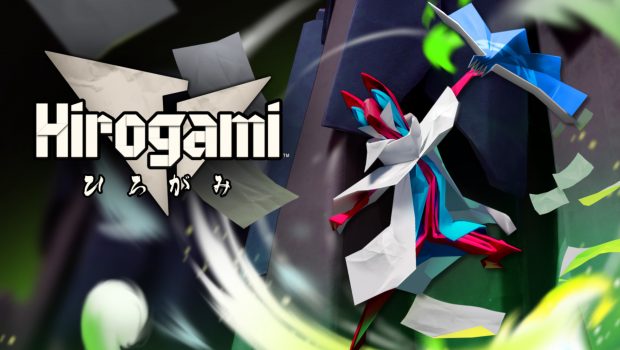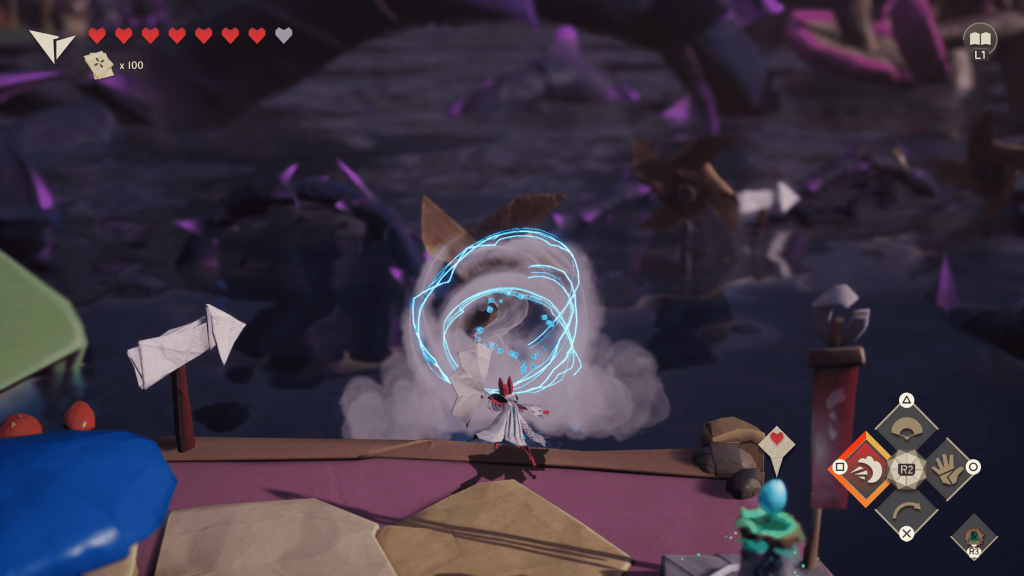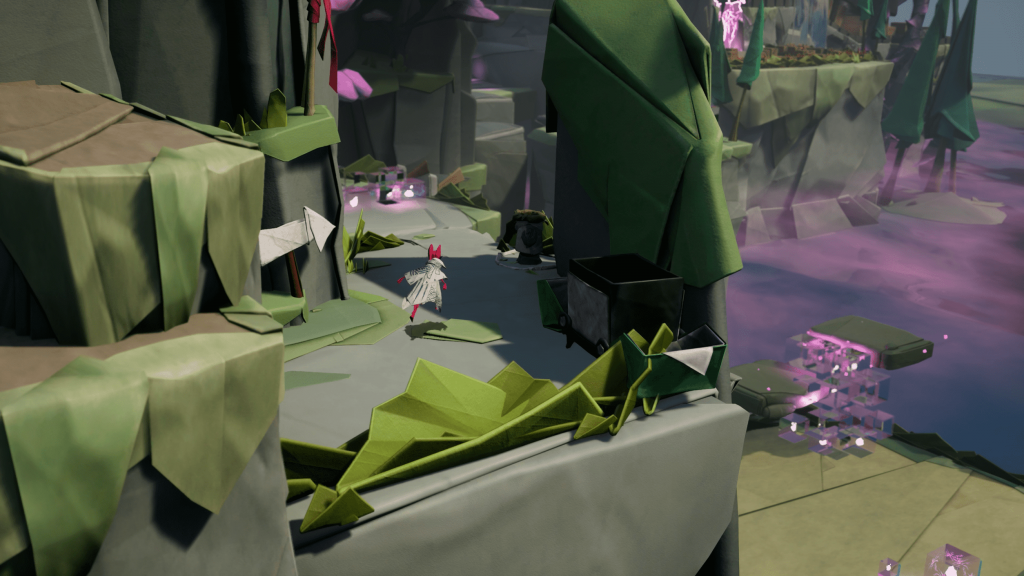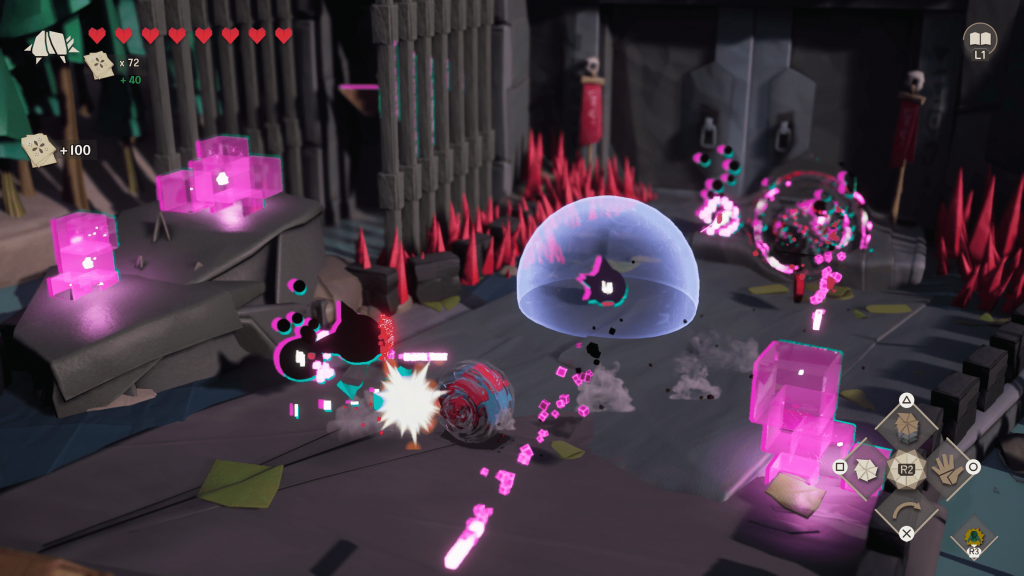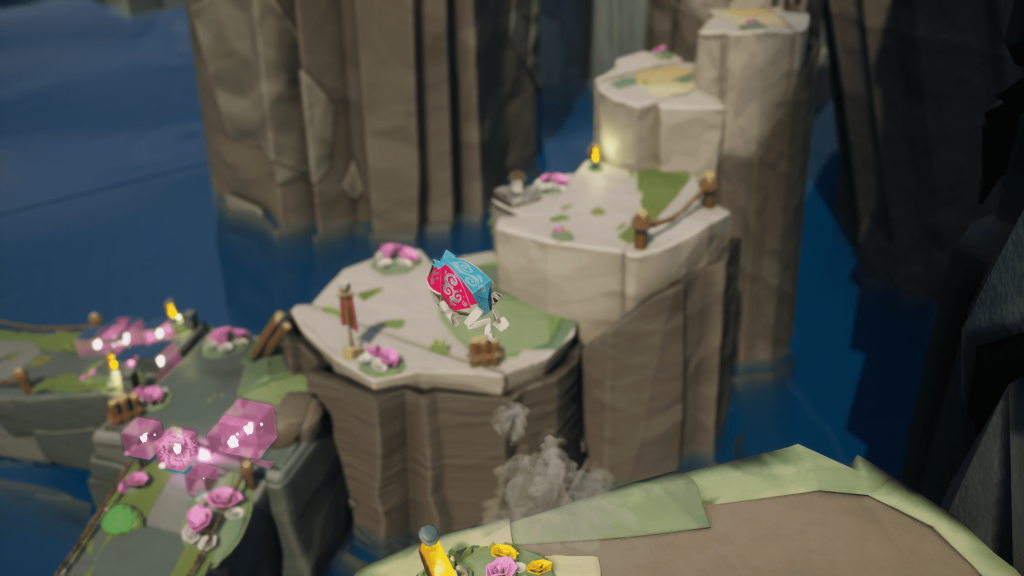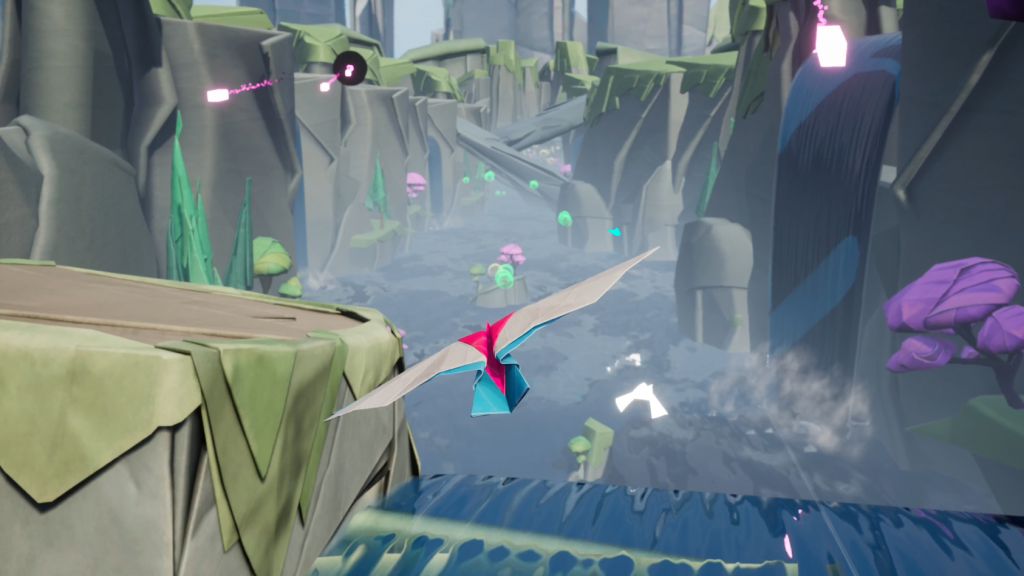Hirogami Review (PS5)
Summary: Hirogami is a visually striking action-adventure platformer set in a charming papercraft world, where players control Hiro, an entertainer turned reluctant hero. Using folding mechanics, animal transformations, and gliding abilities, you traverse levels, solve puzzles, and combat corruption spreading across the land. While its slower pace and uneven level design hold it back, the game’s inventive mechanics and unique aesthetic make it a memorable, meditative playthrough.
3.3
Oragami Odyssey
Take down and cleanse odd corruption with a folded paper fan! Hirogami is an action-adventure platforming game developed by Bandai Namco Studios Singapore in collaboration with GYAAR Studio, published by Kakehashi Games, and released on September 3rd of 2025 for PC (via Steam and Epic Games Store) and PlayStation 5. With its handcrafted origami aesthetic and contemplative tone, it stands apart from more bombastic action-adventure platformers. Instead of relying on high-octane combat or constant spectacle, Hirogami unfolds as a slower, more deliberate journey that emphasizes patience, transformation, and quiet discovery. It’s not without faults, particularly in pacing and level design, but its visual charm and thematic consistency keep it from folding under its own weight.
Hiro is an entertainer in his paper village who never aspired to be a fighter. That role once belonged to Shiori, a sharp-tongued guardian who still views Hiro as a nuisance and not useful in the slightest. When the Blight returns, spread by glitch-born creatures corrupting the land, it’s Hiro, not Shiori, who sets out to restore the Celestial Shrines. Protecting these shrines ensures the safety of the village and ultimately the world, and so Hiro’s reluctant journey begins. What makes the narrative interesting is its grounding. Hiro isn’t a chosen warrior, but someone filled with doubt, uncertain of their worth. Themes of courage, self-discovery, and stepping into responsibility naturally emerge, though the dialogue itself is often brief, sometimes leaning on a “silly side”, and almost feels restrained. While this avoids the heavy-handedness that plagues some games, it also feels like a missed opportunity. With such a strong visual identity and mechanical cohesion, a more fully developed script could have added much-needed emotional depth.
Gameplay blends platforming, light combat, and puzzle-solving, all tied together through Hiro’s folding abilities. With their sacred fan, Hiro can clear patches of Blight, repair altars, and unlock resources. More importantly, they can purify corrupted animals, learning to fold into their forms. Each animal form offers unique abilities: the armadillo rolls through barriers, the frog leaps high and spits to immobilize enemies, and the bird allows Hiro to glide gracefully across wide gaps. The flying sections in particular stand out, offering moments of fluidity that contrast well against the game’s otherwise grounded pace. These abilities are used both in combat and environmental navigation, creating a consistent loop of experimentation and problem-solving.
The combat system is simple, but benefits from the transformation mechanic. Different forms have strengths and weaknesses, encouraging quick shifts mid-battle. The armadillo’s rolling attack is devastating, but reckless, while Hiro’s own fan strikes are precise, but limited. Switching between forms requires holding R2, which also doubles as Hiro’s paper-glide ability, leading to occasional input confusion. While not a dealbreaker, this friction can become frustrating during chaotic encounters. Still, the system has just enough depth to remain engaging, especially when combined with environmental hazards like spikes or collapsing bridges.
Platforming is equally mixed. Hiro’s double jump and glide feel responsive, and the paper mechanics add some variety. Slipping through cracks, catching updrafts, or gliding between fire obstacles feels clever when it works. However, level design is uneven. While there are smart sequences that ask you to combine abilities creatively, others fall flat. Collectible paper fragments, required for building structures to continue through a level, are often bunched together at the end of a path, which undermines the sense of discovery. Instead of being strewn along an optional path to obtain in an organic way, picking up all of these papers at the end of the path makes the game feel arcadey in a bad way. Worse, some levels feel barren, with stretches of empty space that don’t seem purposeful, breaking the sense of flow. The design does become more complicated later on, but not in ways that feel especially fun. Instead of leaning into fast, creative transformations between origami animals, it often settles for more tedious obstacles that drag the pace further down.
Pace is an important point here. Hirogami is not a fast-moving game. Everything, from the animations, to the traversal, to the level progression, operates at a slower rhythm. This deliberate tempo can work in its favor, reinforcing the fragility of its papercraft world, but it also risks wearing thin. Levels frequently linger without much happening, and though the flying sections provide bursts of excitement, the game never shifts into a higher gear. It isn’t a high-action adventure so much as a meditative journey, which may or may not suit every player’s taste.
Progression relies heavily on Golden Crane Tokens, earned by completing a level’s main objectives. These tokens unlock access to newer levels, meaning you must finish primary tasks to move forward. For much of the game this system feels natural, but toward the end it begins to strain. Some objectives can be time-consuming or require replaying levels, slowing progression at a point when momentum should be building. In my experience, it took about nine hours to complete the game naturally, including some light backtracking. A 100% run, accounting for hidden chests, purified beasts, and crafted ornaments, would likely stretch closer to 12–15 hours.
Hiro’s hub near the village is Ruz Pappy, a workshop where collected diagrams and resources can be turned into ornaments which are equipment-like upgrades that improve health, combat abilities, or traversal options. Ruz Pappy also identifies relics and hosts a gallery for artwork and music that you can find during your journey, offering nice side distractions. The crafting system is well-integrated, making use of the game’s different paper currencies with Gold, Kozo, and Crane Souls among them, but it occasionally edges into busywork. Gathering the right paper in general during gameplay to unlock a bridge or create a badge doesn’t always feel rewarding, especially when level design doesn’t support the effort with interesting encounters.
On presentation, though, Hirogami excels. Its papercraft aesthetic is consistently enchanting. Grass sways with bounce, flowers ripple with life, and even corrupted beasts feel tactile, as their entire existence in this reality seems to be somewhat of a mistake. Hiro’s slightly reduced frame rate compared to the environment gives them a stop-motion quality, further emphasizing the crafted feel. The Blight itself, represented by glitchy distortions, provides a striking visual contrast against the otherwise serene setting. Audio design is equally strong. I loved the pitter-patter of the characters footsteps which come with a paper-like quality. The soundtrack is adventurous, blending traditional Japanese instruments with orchestral swells, evoking a similar vibe to Kena: Bridge of Spirits. It enhances the meditative tone, though occasionally it outpaces the slow rhythm of gameplay itself, making you wish the pacing matched the music’s energy.
I didn’t run into any significant technical issues beyond occasionally getting stuck in the environment, but the bigger drawback lies in Hirogami’s overall tone. Once personal expectations are set aside, the themes of self-doubt, courage, and transformation are present, yet the writing never fully commits to exploring them. Dialogue snippets often feel detached from the atmosphere and rarely push into more meaningful or memorable territory. Characters come across as flat, the otherwise stunning world feels strangely distant, and the story never quite finds its weight until the very end. This restraint ultimately limits the game’s ability to leave a lasting narrative impression. With such a carefully realized world and mechanics so closely tied to its ideas, the understated script feels like an underdeveloped element in an otherwise cohesive design.
Final Thoughts?
Hirogami is a visually beautiful and thematically consistent platformer that embraces a slower, more deliberate style. Its folding mechanics, animal transformations, and flying sequences provide standout moments, and its papercraft aesthetic is consistently delightful. However, the game’s sluggish pace, uneven level design, camera frustrations, and underwhelming dialogue prevent it from reaching its full potential. It’s a game that succeeds more in presentation and concept than in execution, offering a meditative, but occasionally hollow experience. Still, for anyone seeking something brief, inventive, and unlike most platformers, Hirogami is worth checking out for its uniqueness alone.


